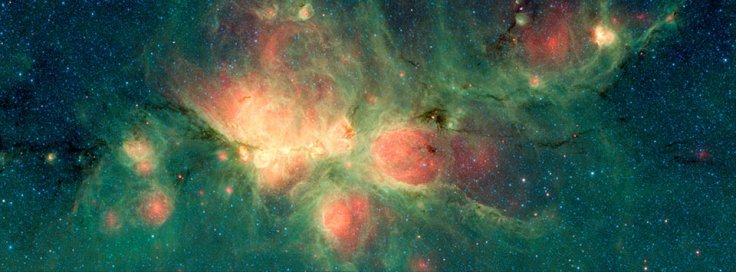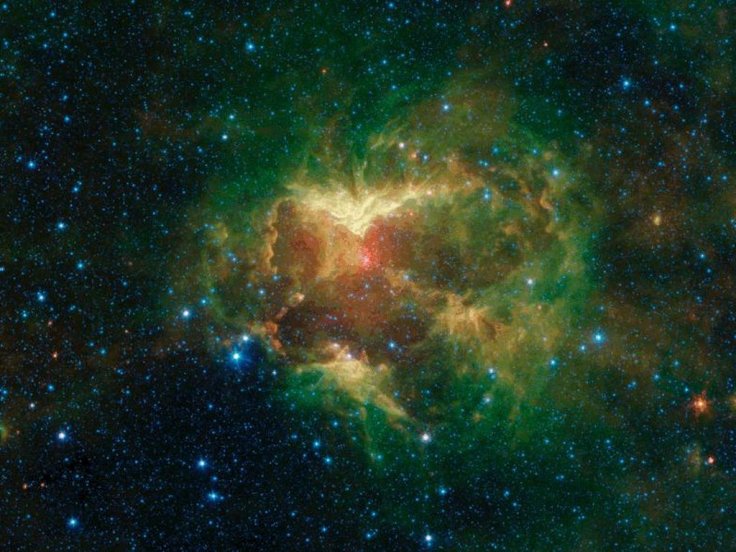
NASA has shared a new image showing a colourful nebula that contains a region shaped like a cat's paw. The stunning image was captured by the agency's Spitzer Space Telescope. Officially launched in 2003, Spitzer is an infrared space telescope. Its imaging capabilities have allowed it to spot the varying wavelengths of various colourful cosmic regions. The latest subject is a massive cloud in space known as the Cat's Paw Nebula.
According to NASA, this nebula is situated within the constellation Scorpius, which lies inside the Milky Way galaxy. The space agency noted that the Cat's Paw Nebula is about 1.3 to 1.7 kiloparsecs from Earth, which is equivalent to 4,200 to 5,500 light-years.
The nebula got its strange name primarily due to its appearance. As seen in the photo, the reddish region at the centre of it resembles the paw of a cat. NASA explained that the colour of this region came about due to the bubbles that were formed by pressurized gas. As for the black streaks cutting across the nebula, the agency said these contain star-forming gas and dust clouds.

"The bright, cloudlike band running left to right across the image shows the presence of gas and dust that can collapse to form new stars," NASA said in a statement. "The black filaments running through the nebula are particularly dense regions of gas and dust. The entire star-forming region is thought to be between 24 and 27 parsecs (80-90 light-years) across."
"The stars that form inside the nebula heat up the pressurized gas surrounding them, such that the gas may expand and form 'bubbles,' which appear red in this image. Asymmetric bubbles may 'burst, creating U-shaped features," the agency continued.
The remaining regions within the nebula are filled in by greenish cloud-like regions. According to NASA, These regions show the leftover radiation caused by the collision between stars and various cosmic materials.
"The green areas show regions where radiation from hot stars collided with large molecules and small dust grains called "polycyclic aromatic hydrocarbons" (PAHs), causing them to fluoresce," NASA explained.









